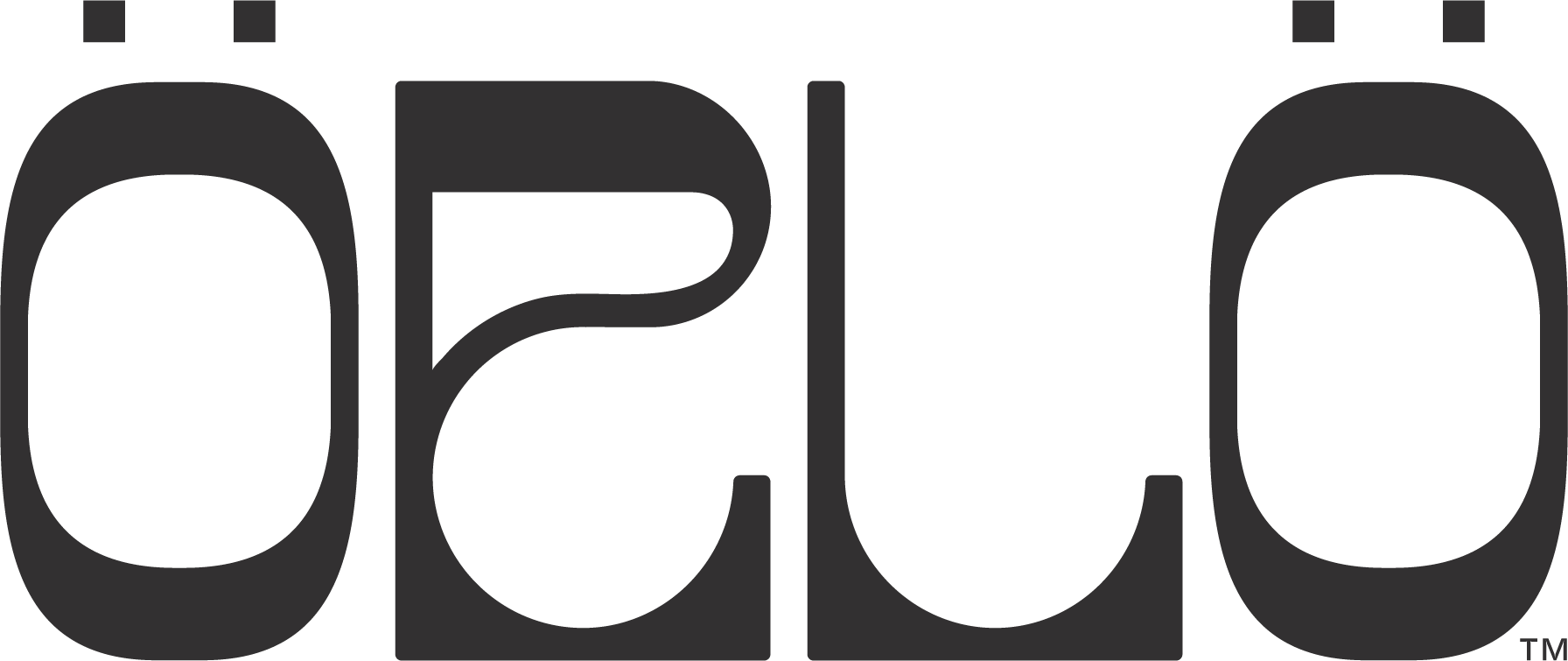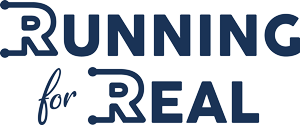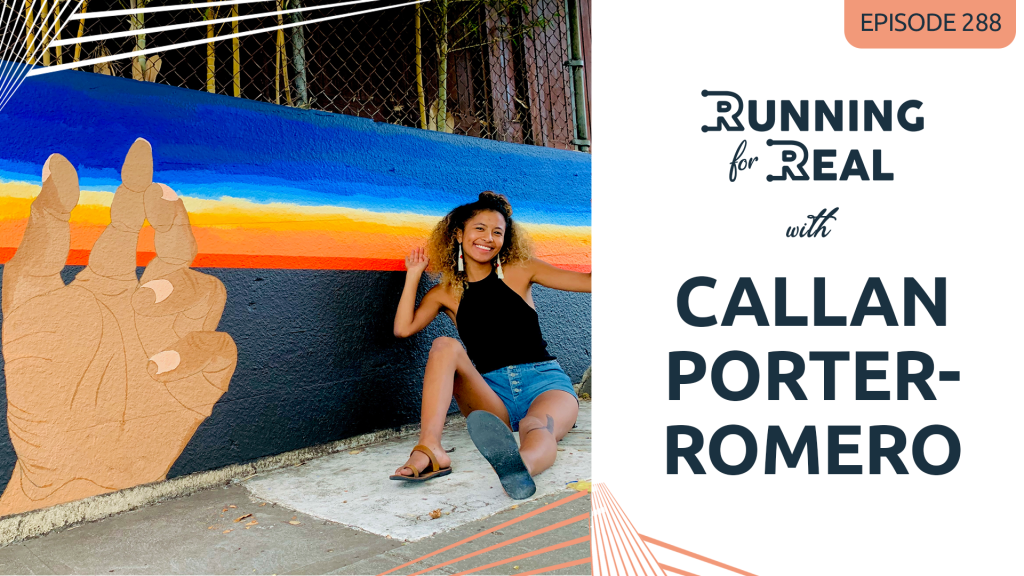When Yatika Starr Fields, an Indigenous runner, artist, and advocate, ran the Western States 100 in 2022, it wasn’t only for himself; it was for the Native American community. For the first time, the Western States Endurance Run officially acknowledged the Washoe tribe, the original stewards of the land on which their race takes place, and they released their first official race poster, from one of Yatika’s paintings.
Yatika’s experience at Western States is the subject of the new short film, Know To Run, produced by the Indigenous-led, grassroots organization Rising Hearts.
Listen to the Running for Real podcast here:
Apple (iTunes) Podcast | Sticher | Castbox | Overcast | Spotify | Google Play | iHeartradio |
Yatika became a runner in his 30s, after he made the decision that changed his life, to give up alcohol. A member of the New York City art scene and a bike messenger, he was enmeshed in “a very, very wild, chaotic culture,” and he realized that it was unsustainable. “Going through that and surviving, it was a big feat in itself because I had a lot of friends that didn’t make it in that time, whether, you know, overdosing or getting hit by cars, you name it. I had family members that had passed away in those years, a young cousin of mine and uncle of mine, and it was all due to alcohol. I’m Native American Indigenous and it’s a lineage, that disease, that problem, within my family, not only mine, but a lot of Native families out there.
“It’s not understood how to discuss that, how to process that, how to perceive that, how to go through life with that,” he continues. “I think that it’s part of the traumas that we exist in as Indigenous people and families, that live within our families and tear us apart, kill us. You know, it’s part of that genocide. It’s part of that movement. It’s part of the infrastructure of colonization that was placed on us and it still exists today. Because our ways were taken from us, how we were, how we are as a people in community, for the most part don’t exist. We still have ceremonies that are there for us, but a lot of people didn’t grow up with it and don’t have the knowledge and access to it. So there are a lot of reasons to struggle to find self as an Indigenous person in this modern day and age. But I’m lucky enough that I was raised in some aspect of the ceremonial way of life. And I had that knowledge and well- being and backbone to find the strength to pull through.”
It was his Indigenous heritage that got Yatika interested in biking. “My dad, he’s a photographer and artist, and he was documenting and riding the first bike ride that the Cherokee Nation put on, called Remember the Removal, in maybe ‘85, ‘84. They retraced the Trail of Tears from North Carolina to Oklahoma on bikes. And I remember their arrival into Oklahoma, and seeing them on bikes and these helmets with feathers on them. I remember being so amazed; there are a few moments of me in my childhood that I remember well, and that’s one of them. I just thought, ‘That’s so cool.’ I wanted to do that.”
He became a bike messenger when he moved to New York, joining one team that raced on the Velodrome track, and another that competed in illegal street races. “That’s what I did,” he recalls. “Day in and day out on the bike, lived it, breathed it.”
Knee surgery took him away from the bike, but, he says, “I was over bike at that point; I was physically just kind of like, ‘I’m done with cycling. I need to just take a break from that.’ But I also needed to be healthy again, and walking and running one mile was good for me. And that’s what set it off for me, running one mile on the treadmill. Once I got that done and I realized I could run nonstop for one mile, I was so excited, and I think that’s what kicked off everything else, really.”
“Everything else” was a succession of races that began with 5Ks and steadily increased in distance. His first ultra was the Pumpkin Holler 50K in Oklahoma. “It’s a big loop around a nature preserve along the river. And I wanted that to be my first because I grew up in northeastern Oklahoma and some of the course goes along the Illinois River. And that’s where I grew up and have some of my earliest memories. So it was really special that I could run there and have that be my first really long effort. And my dad was there to help me out and that was really special too.”
More ultras followed, including the Ultra-Trail du Mont-Blanc (UTMB) and the Black Canyon 100K, which qualified him for Western States. When Jordan Marie Daniel asked him if he would be interested in running Western States for her non-profit, Rising Hearts, it was “a no-brainer,” he says. “I knew when Jordan reached out that this was gonna be a big thing, for us as individuals and for the people that we’re gonna be working with. The Western States as an organization, it was gonna be a new foot forward for them, working with the Native communities, the Washoe community’s Herman Fillmore [culture and language resources director for the tribe], who gave us his time to work with us and share so much of who he is in his community, and his family, as well.
“So I owe a lot and praise them because without them, we couldn’t have done any of this. Me, as the runner, I was kind of an advocate through movement, taking Jordan’s words and Herman’s words and putting them out there onto the trails as a representative of the Indigenous community through motion. And so that was a big role for me.”
The race itself was brutal. Yatika had gotten Covid just a few weeks before, which depleted his muscles. His plan to trade out his pack for lighter handhelds and to change into dry gear after a water crossing was derailed when he got to the 50K mark and his crew wasn’t there. His wet socks created blisters, and on a descent, “That’s when my legs started to lock up, my quads and hamstrings, and it was so hard for me to descend at a certain point for those next miles down towards the river. And then I felt the blisters open up, as well. It was the worst pain I’ve felt, and my legs were locked to move down, and I just had to stop for a second.
“Luckily some of these races that I’ve done prior to Western States really helped me understand how to handle that pain, how to handle movement and keep moving forward. Up until that point, it was a beautiful, beautiful experience, even in the dark times, even in the pains of it. Just pushing myself; and running with other runners and seeing them, as well, doing their own thing; and looking down at my shorts and seeing that Western States bib; it was just like, ‘I can’t believe I’m doing this,’ you know? Even in the midst of what was happening, it was, ‘I’m in this; I’m in this race; I’m gonna be going down on that track and crossing that magical, famous finish line, and it was really powerful.”
Lydia Jennings paced him through the last miles, which helped, but “My legs were not working and I was just in so much pain going on the last section, and that last five miles really had to hold onto her shoulder. At some point I had to run because I knew what time I wanted, and I was crying because it was so much pain, but it was tears of joy, tears of pain, and in memory of what I was running for. And so at that point, I transcended a pain that I thought I couldn’t get over, a physical pain, and pushed through that mentally to run this technical section down. So that was a really beautiful moment that really was touching for me. I made it to the bridge and went up, and then it was just a home stretch. I had to walk some of that mile down there, and then the team met me about a mile out from the track, a big crew of us, and it was just so special. And at that point, I somehow found legs to run an eight minute mile.”
Yatika is happy with the way the race played out. “We did it together as a community for change, as a collaboration for change. And I felt it was really successful, and I was really humbled by the opportunity to be the first runner to do that.”
Photo credit / blog post: Jacob Banta, Lake Sonoma 50 Miler (2022)
Photo credit / podcast track: Howie Stern, Ouray 50 Miler (2019)
resources:
Thank you to Örlö and Tracksmith for sponsoring this episode.

Örlö is the world’s most sustainable algae supplement. Algae is a potent source of EPA and DHA, the omega-3 fatty acids that are essential to life. They help you take care of your brain health, heart health, and immune system, and your body absorbs them three times better than fish oil. They also don’t have that fishy aftertaste!
Örlö’s algae is grown in pristine water in Iceland using only green energy and they employ a carbon-negative production process. 99% less land and water resources are used, so you get 100% of the benefit with 0% of the guilt!
You can go here and use code TINA at checkout to save 12%!

Tracksmith is an independent running brand inspired by a deep love of the sport. For years the brand has elevated running wear using best-in-class materials and timeless silhouettes that perform at the highest level and can be worn everyday, not just for running.
Tracksmith helps the environment by making comfortable, durable clothes that will last for years, rather than winding up in the landfill, but that’s not the only contribution they make. They supported Running for Real in creating our RED-S: Realize. Reflect. Recover program. They help athletes who are trying to make the Olympic trials, and they offer scholarships for creatives to work on their crafts. They also have lots of events – Tina will be hosting events with them at the Boston and London marathons.
If you’re a new customer, go here and use the code TINANEW at checkout to get $15 off. Returning customers can use the code TINAGIVE, and Tracksmith will donate 5% of your order to TrackGirlz.

Please help us spread the word about RED-S / REDs! It’s a common belief that only elite athletes suffer from Relative Energy Deficiency in Sport, but it can affect anyone whose energy output exceeds what they’re taking in, and it can have long-term health consequences, especially on bone health.
We have 50+ videos on YouTube, with experts answering questions about all the different aspects of RED-S. Even if you don’t have RED-S, there’s valuable information there for all athletes, especially about nutrition.
If you are suffering from RED-S, you’ll find support and expert advice in our private community, which is free to join!
Thanks for listening!
We know there are so many podcasts you could listen to, and we are honored you have chosen Running For Real. If you appreciate the work that we do, here are a few things you can do to support us:
- Take a screenshot of the episode, and share it with your friends, family, and community on social media, especially if you feel that the topic will resonate with them. Be sure to tag us on Twitter, Facebook, Instagram
- Leave an honest review on iTunes or your favorite podcast player.
- Your ratings and reviews will really help us grow and reach new people.
Not sure how to leave a review or subscribe? You can find out here.
“Thank you” to Yatika! We look forward to hearing your thoughts on the show.



